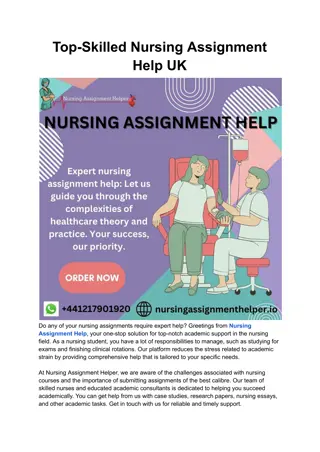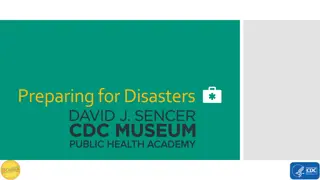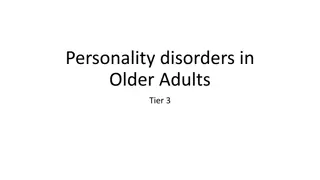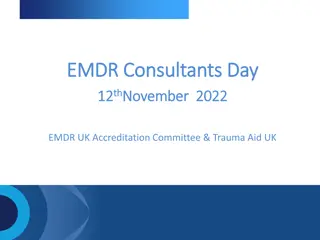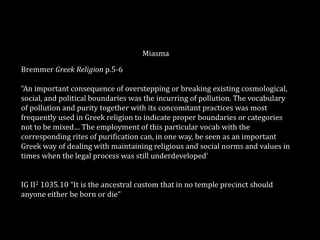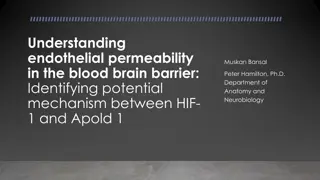Could EMDR Help Scarlett and Rhett?
Explore using EMDR for couples, incorporating bilateral stimulation and Relationship Enhancement therapy to manage emotional reactivity. Case examples and research proposals for keeping couples together during EMDR processing.
Download Presentation

Please find below an Image/Link to download the presentation.
The content on the website is provided AS IS for your information and personal use only. It may not be sold, licensed, or shared on other websites without obtaining consent from the author.If you encounter any issues during the download, it is possible that the publisher has removed the file from their server.
You are allowed to download the files provided on this website for personal or commercial use, subject to the condition that they are used lawfully. All files are the property of their respective owners.
The content on the website is provided AS IS for your information and personal use only. It may not be sold, licensed, or shared on other websites without obtaining consent from the author.
E N D
Presentation Transcript
Frankly My Dear I Don't Give a Damn: Could EMDR Help Scarlett and Rhett? BY LISA JOHNSON, PHD, LMFT AND MARGARET, PEGGY MOORE, LISW
Objectives Explore theoretical foundations for coaching couples to use EMDR bilateral stimulation together to manage emotional reactivity. Describe Relationship Enhancement (RE) therapy as an option for incorporating EMDR into therapeutic process. Use Case examples for coaching one couple through Safe Place Exercise and Discussion of emotionally charged topic to manage reactivity of partners during discussion. Explain Case Selection criteria and Areas where caution is warranted. Propose research on this method for keeping couples together during EMDR processing.
Can this marriage be saved? THE FINAL SCENE FROM "GONE WITH THE WIND"
Scarletts Problems Scarlett s age Adolescence (incomplete development of the cerebral cortex) Impulsivity Lack of emotional regulation Unbounded energy and imagination
Rhetts problems COLLEGE DROPOUT ALIENATION FROM HIS FAMILY AND COMMUNITY UNWILLINGNESS TO COMMIT TO A CAUSE OR A RELATIONSHIP OPPORTUNIST
Could EMDR have been helpful? We ll ask you this question again at the end of this presentation We are proposing having couples deliver BLS during discussion of emotional charged topics to help manage their emotional reactivity, increase connection and enhance trauma recovery
Hypothesis about why this may work The couple becomes the object for safety while discussing emotionally charged memories and experience instead of the therapist. Therapist is there to facilitate and coach the couple in managing emotional reactivity in each other, which builds trust and competency. The couple learns skills for helping their partner soothe and return to "whole brain" functioning that they can implement on their own.
Relationship Enhancement 5 minutes Teach/Coach couples to resolve conflict independently Listen with deep empathy (using Becoming). Express themselves effectively (with Reflection). Discuss by putting empathy and expression together in a conversation. Problem Solving becomes a win/win possibility as each partner's needs are met.
Neurobiological under pinnings We must have access to whole brain to learn new skills, The Rational/Empathetic part of the brain is disabled when brain stem has been triggered. Memory integration is blocked during overwhelming events. The brain is THE SOCIAL ORGAN of the body, and we need other people to feel in balance. Healthy self-regulation, through relationships and self-reflective observation, may depend on the development of the integrated circuits of these prefrontal regions.
RELAXATION RESPONSE EMDR therapists notice that once BLS begins the client usually experiences a relaxation response. Dr Gregory Nicossa EEG studies in the early 90 s indicated that the BLS seem to allow the two sides of the brain to communicate better thus the brain is working more efficiently.
Mirror Neurons Marco iacoboni (UCLA) has argued that mirror Neuron systems in the human brain help us understand the actions and intentions of other people. In 2005, iacoboni and his colleagues reported that mirror neurons could discern if another person who was picking up a cup of tea planned to drink from it or clear it from the table. In addition, iacoboni has argued that mirror neurons are the neural basis of the human capacity for emotions such as empathy.[11]
Case selection and implementation Pick couples a who are committed to relationship, there is no history of violence within their relationship, or current actual threatening behavior of abandonment or violence. Just like trust needs to be evident with a therapist, trust and capacity for empathy must be available in the relationship. The relationship with the therapist must have sufficient time to develop the couple's trust of the therapist. Assess whether the individuals need their own individual EMDR separate from the couple work
Case Study: Linda & Dave Linda and Dave have been living together for 4 years and in a relationship for 11 years. Linda has two adult children from her previous marriage. Linda has PTSD due to child abuse by her biological father and step mother and domestic violence from her first husband. Her mother died when she was young and lived with maternal grandparents in a very loving home prior to moving in with her father and stepfather. Dave reports having anorexia from ages 12-16 and was treated with hospitalization and family therapy. He reports this issues have been resolved and was in marital counseling in marriages 1, 2 and 3 and currently attends monthly individual therapy. Linda and Dave learned the basic skills for Relationship Enhancement (RE), and attended a RE weekend workshop. Although they learned the RE skills and use them well when calm, they still struggle with emotionally charged material.
Linda & Dave Relationship Challenges Linda kept her trauma history buried to allow her to function, but was triggered when she thinks Dave is angry. When triggered, she sometimes retreated to a bedroom and locked the door, shutting Dave out. When Linda shut Dave out it reminded him of one of his previous marriages when he was locked out of his house and cut off from his belongings. There was no evidence of violence between Linda & Dave. Dave said he wanted to understand what triggered Linda so they can work on it together. He wanted her to feel safe so she didn t shut him out. Linda would rather share her history with Dave than anyone else.
Linda & Dave Safe Place Exercise
Linda & Dave Helping Other Change Discussion
Linda & Dave Treatment Plan Use BLS while discussing emotionally charged current issues within the relationship to assist each member in managing emotional reactivity and allow each of them to use their whole brain to solve problems. In a previous session, Dan raised a concerns with Linda about his discomfort with her enthusiasm about his campaign for judge. In this session, Dave used Helping Others Change RE skill to address his concern about the way Linda pushes herself past pain when injured. In the subsequent session Dan shared what it was like for him when he was a teenager with anorexia.
Linda & Dave Treatment Plan part 2 Process Linda and Dave s past traumas with the partners administering BLS using traditional EMDR protocols to assist them in understanding the others triggers to promote trust and connection during conflicts. I suspect that Dave experienced a form of emotional trauma due to his reaction to being shut out by Linda that has not bee fully explored. Dave maintains that he is forthcoming with dealing with his feelings, but with a history of anorexia and three failed marriages there is a history of trauma.
Linda & Dave Treatment Plan part 3 Improve Containment and Resource installation Linda admits that she avoids talking and thinking about her trauma history due to interference in her functioning.
Two case studies JOHN AND LOUISE JACK AND FLORA
David Deceased John 68 yo Louise 62 yo Anna
Presenting Problem We fight all the time
Johns History His mother was a war bride from Europe John s father was a violent alcoholic. He was the oldest of 3 children He is a Vietnam veteran He has been in treatment for PTSD for over 10 years
Marital History John was married about 42 years ago for 3 years and has a daughter and two grandchildren. His relationship with his daughter is strained and he feels his grandchildren disrespect him John and Louise met online and dated for about 5 months before they married.
Louises history Louise and her late husband had 2 children They are both married and have children of their own. John has an excellent relationship with his step children Louise took care of her very ill husband for about 10 years before he died.
Problems in the Marriage John has developed physical problems that leave him in pain a great deal of the time Louise resents his disability and feels she was mislead about his health before they were married. Louise gets angry and strikes out verbally at John John collapses emotionally when this happens
Problems cont Louise feels that John does not respect her intellect and abilities I m never right. He argues with me all the time John feels helpless and powerless to change the interactions once they escalate John is described as having OCD
Committed to the Marriage Both John and Louise say they are committed to the marriage
PERFECT FOR EMDR INDIVIDUAL EMDR CONJOINT EMDR
INDIVIDUAL EMDR PLAN 1. work with each one individually around current triggers and past touchstone memories 2. when there is improvement in these areas begin conjoint EMDR therapy 3. continue individual work as needed
Louises work Louise is triggered by John s poor physical health . She thought she was going to have a healthy new husband and she is very resentful .Louise s work centered around the behaviors that trigger memories of her husband s illness.
Johns work John panics when he feels he is under attack He doesn t feel safe Touchstone memory was of his father beating down his door in the middle of the night Other violent confrontations with his father that made him feel that he was a dangerous person.
Couples work Once both had defused their current triggers they came together and the RE therapy model was used as they tapped on each other's hands The targets were the issues that had triggered their fights in the past.
RESULTS ARGUMENTS BECAME MUCH LESS FREQUENT JOHN NO LONGER PANICKED WHEN ISSUES CAME UP WITH LOUISE LOUISE FELT MORE RELAXED AND COMMITTED TO THE RELATIONSHIP
COMMITTED, BUT IN CONFLICT M75 yo FLORA AGE 38 JACK AGE 40 Amy age 2
Themes of conflict How to raise and discipline their adopted daughter Flora s conflicts with her mother in law Managing a relationship that has many demands 1. 2. 3.
Additional work Suggestions on how to manage the additions to their household Mother in laws need to cook every night Suggestions for parenting
Couple completed their counseling after 4 sessions
Guidelines for EMDR therapist Clinicians need to use their own best judgment about what will be beneficial to clients. Francine Shapiro cited two instances in her book; one where conjoint sessions enhanced the couples connection one where the partner fell asleep during processing. Sufficient preparation, provide orientation and informed consent, reasonable explanation of what to expect. If you suspect dissociation, screen for dissociation. Restrain the couple from practicing on their own prior to practicing and being coached in therapist presence. Once they have sufficient mastery with coaching, prescribe easy to process topics to use, such as safe place exercise or resource enhancement, such as talking about fun times together that they would like to increase or improve.
Could EMDR Help Rhett and Scarlett? Individual work first? Bonnie's death Grief work together or separately? Rhett s break from school and family? Scarlett s impulsive choices? Scarlett s losses
Research suggestions Research that compares the effectiveness of this model is needed. Comparing couples using Conjoint EMDR to couples using individual EMDR may show if this is more effective at building connection . Measuring physiological reactions during couples discussion in conjoint therapy with and without BLS may support the theory that the use of BLS assists in managing reactivity Others?
References and Resources Iacoboni ,M. (2009) Imitation, empathy, and mirror neurons. Annu Rev Psychol. 2009;60:653-70. Ortwein, M.C and Guerney, B. (2005) Mastering the Mystery of Love: An easy-reading relationship enhancement program for couples. Leader s Guide. Relationship Press: Frankfort, KY. http://www.skillswork.org/mml- curriculum/mastering-the-mysteries-of-love/ Scuka, R.F (2005). Relationship Enhancement Therapy: Healing through deep empathy and intimate dialogue. Routledge: NYC. http://www.nire.org/ Shapiro, F. (2010). The EMDR Approach to Psychotherapy: EMDR Institute Basic Training Course (weekend one and two) . EMDR Institute: Watsonville, CA. http://www.emdr.com/ Shapiro, F. (2001). Eye Movement Desensitization and Reprocessing: Basic principles, protocols and procedures. Guilford Press: NYC. http://www.emdr.com/ Siegel, M.D. (2007). An Interpersonal Neurobiology Approach to Psychotherapy: Awareness, Mirror Neurons, and Neural Plasticity in the Development of Well-Being. http://www.ithou.org/node/2730
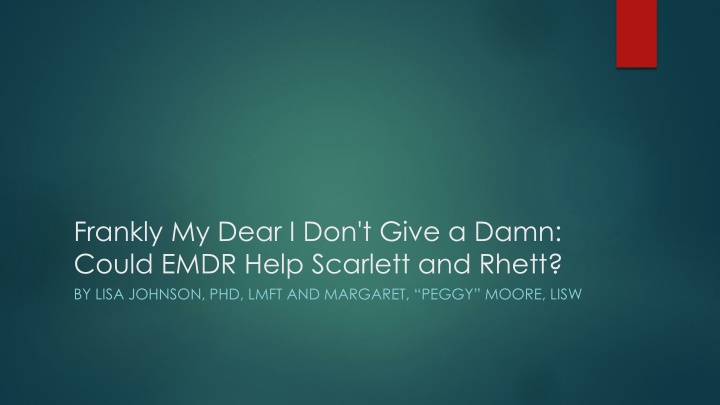

![❤[READ]❤ Cosmic Biology: How Life Could Evolve on Other Worlds (Springer Praxis](/thumb/21556/read-cosmic-biology-how-life-could-evolve-on-other-worlds-springer-praxis.jpg)



